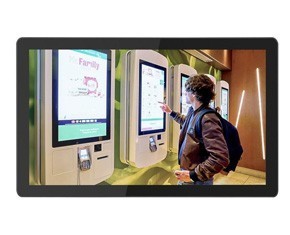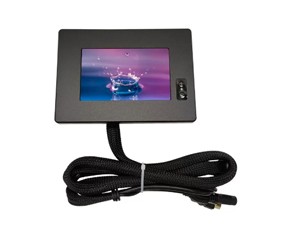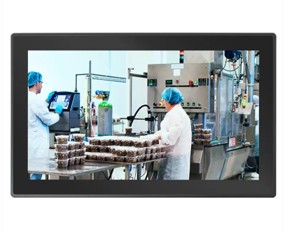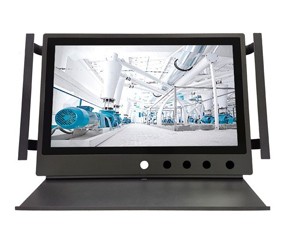Nov. 27, 2024
Choosing the right industrial display monitor is a critical decision for procurement officers in any organization. Whether the monitor is meant for a factory floor, a control room, or an outdoor kiosk, the correct choice impacts productivity, usability, and the overall success of operations. Industrial display monitors need to be durable, reliable, and capable of handling tough environments. This guide will explore the key factors to consider when selecting the ideal industrial display monitor for your specific needs.
Before making a purchase, procurement officers need to understand the specific needs of the workplace. Industrial display monitors are not the same as consumer-grade monitors. They must be able to withstand challenging environments, such as extreme temperatures, high humidity, vibrations, and potential exposure to dust, moisture, or even chemicals. Depending on the application, factors such as screen size, resolution, brightness, and durability are essential to ensure a successful deployment.
Procurement officers should assess the following features when choosing an industrial display monitor:
The screen size should be chosen based on the work environment and how far users will typically be from the display. A large monitor may be necessary for control centers where multiple operators need to monitor information simultaneously. For environments with limited space, smaller screens with high resolutions are ideal to ensure that information is clear and easy to read. Additionally, high-resolution monitors, like Full HD or 4K displays, can provide sharper images and more detailed data, which can improve efficiency in data-driven environments.
Brightness is crucial for ensuring visibility in varying lighting conditions. In outdoor or bright environments, a high-brightness monitor (at least 1000 cd/m² or more) ensures that the display is legible even under direct sunlight. A good contrast ratio is also important for delivering sharp, clear images, especially in settings where fine details need to be visible, such as in manufacturing or logistics operations.
Industrial monitors need to withstand extreme conditions. Monitors built to military standards (MIL-STD) or with ingress protection (IP) ratings are highly desirable in industries where exposure to dust, water, or rough handling is common. Look for a monitor with at least an IP65 rating, indicating that the device is dust-tight and can handle water splashes. The housing should be made of durable materials like aluminum or steel to provide protection against impacts and vibrations.
Ensure that the monitor can connect to the devices or systems in use. Many industrial settings require the ability to connect to a variety of sources such as PCs, network systems, or specialized equipment. The display should support standard connectivity options, such as HDMI, DisplayPort, VGA, or even wireless connections. Additionally, the monitor should be compatible with the software and hardware systems used in your industry.
In certain applications, a touchscreen may be an essential feature, particularly in environments where workers need to interact directly with the system. Touchscreens can increase efficiency by allowing users to interact with the system quickly and intuitively. Consider whether you need a resistive or capacitive touchscreen, depending on the level of precision required and whether the display will be used with gloves or in high-touch environments.
Custom Capacitive Touch Monitor
When selecting an industrial display monitor, the cost is always a consideration. However, it is important to strike a balance between cost and quality. While cheaper options may seem attractive, they may lack the durability and features necessary for long-term use in demanding environments. High-quality monitors may have a higher upfront cost but can reduce maintenance costs and downtime over the monitor’s lifetime. A monitor with a solid warranty and a reputation for longevity is a smart investment for any organization.
Industrial display monitors serve a wide range of applications across various sectors:
In manufacturing facilities, industrial displays are often used to display production data, equipment status, and process controls. Monitors should be able to show real-time information clearly and accurately, even in environments with heavy machinery or high temperatures.
In control rooms, industrial displays monitor various aspects of a system, such as safety systems, surveillance cameras, or energy management systems. These monitors must offer high resolution and wide viewing angles to ensure that operators can read data from various sources.
Outdoor kiosks require bright, weather-resistant displays that can operate effectively in a range of environmental conditions. These monitors are often used for digital signage, ticketing, and customer interaction. They must be durable and feature high brightness for visibility in direct sunlight.
The most important feature is durability, especially in tough environments. A monitor must be able to handle exposure to dust, moisture, chemicals, and extreme temperatures. Other key features include brightness, resolution, and ruggedness to ensure long-term reliability.
Look for monitors that have been tested to industry standards for durability (such as MIL-STD or IP ratings) and check customer reviews for feedback on reliability. Also, ensure that the monitor comes with a solid warranty and after-sales support.
Yes, investing in a high-end industrial display monitor is often worth it in the long run. These monitors tend to offer better performance, longevity, and reliability, which can reduce the need for frequent replacements or maintenance costs.
By understanding the specific needs of your organization and evaluating the right features, procurement officers can select an industrial display monitor that fits the purpose and budget, providing long-term value and ensuring seamless operations.
Sihovision has a wide range of industrial touch screen computers for you to choose from, with a variety of advanced features and waterproof functions, higher sensitivity and faster response time. Please feel free to contact us for purchase.
Do you want to receive more information about industrial display monitor? Then we are happy to answer your questions. Fill in the contact form or send an email to https://www.sihovision.com.



Capacitive Vs Resistive Touch Screens: When to Choose?
Mar. 14, 2025

How to Choose Capacitive Touch Monitors
Dec. 27, 2024